When you're considering moving your website from Umbraco to Kentico, it can feel like a big decision. But here's the good news: it's a step toward unlocking smoother operations, better scalability, and tools that fit your business like a glove.
You may be wondering why Kentico is such a strong contender for businesses today. With its robust features and user-friendly design, it often becomes the CMS of choice for growing brands. It's not just about getting things done; it’s about doing them smarter and faster.
Think about this: how much easier would it be if you had an all-in-one platform that handles your content management, marketing automation, and customer engagement seamlessly? That’s Kentico for you.
Let’s walk through why making this shift could be the best move for your business, what challenges might pop up, and how you can tackle them like a pro.
Understanding Umbraco and Kentico
When it comes to choosing the right CMS, you’ve likely come across both Umbraco and Kentico. Each has its strengths, but what sets them apart?
Umbraco: The Open-Source Favorite
Umbraco is an open-source CMS known for its flexibility and simplicity. It’s a popular choice among developers because it allows for significant customization. However, while it’s free to use, the hidden costs can add up, especially when you need to integrate advanced features or hire developers with specific expertise.
It’s great for businesses with smaller teams or those who prefer a developer-centric platform. But as your business grows, you might find yourself needing more robust tools and built-in features.
Kentico: The All-in-One Solution
Kentico, on the other hand, is an all-inclusive CMS that combines content management, digital marketing, and e-commerce capabilities. It’s designed to streamline processes, giving you everything you need in one package.
From drag-and-drop content creation to AI-powered insights, Kentico is built for businesses that want to scale without constantly patching their systems. It’s a solution that doesn’t just adapt to your needs but actively supports your growth.
Umbraco vs. Kentico: A Quick Comparison
Feature | Umbraco | Kentico |
Customization | High but developer-reliant | High with built-in tools |
Ease of Use | Developer-friendly | Business-user-friendly |
Marketing Tools | Limited without add-ons | Built-in marketing suite |
Support | Community-based | Dedicated support team |
Scalability | Moderate | Excellent for enterprise |
So, why consider switching to Kentico? If you’re looking for a platform that doesn’t make you jump through hoops to get things done, Kentico is the answer.
Why Migrate from Umbraco to Kentico?
Making a move from Umbraco to Kentico isn’t just about switching platforms—it’s about upgrading your capabilities. So, why should you make the leap? Let’s break it down.
1. Outgrowing Umbraco’s Limitations
While Umbraco is a fantastic CMS for small to medium-sized businesses, it often struggles to meet the needs of larger, more complex operations. Customizing features, adding integrations, or scaling up can require significant developer effort—and that’s where the headaches begin.
Kentico, on the other hand, offers out-of-the-box features that reduce dependency on custom coding. From marketing automation to e-commerce integrations, everything is designed to work seamlessly without extra hassle.
2. All-in-One Functionality
Do you find yourself juggling multiple tools for content management, email campaigns, and customer insights? With Kentico, you can wave goodbye to scattered workflows. It combines all the tools you need into one cohesive platform, making it easier to manage your digital presence and track performance.
3. Future-Proofing Your Business
Let’s face it—your business is only going to grow. With Umbraco, scaling up can feel like navigating a maze, requiring constant tweaks and costly upgrades. Kentico is built with scalability in mind, ensuring your CMS evolves alongside your business without breaking a sweat.
4. Enhanced Marketing Features
Are you looking for more robust marketing capabilities? Kentico’s built-in tools for personalization, A/B testing, and analytics give you an edge. No need for third-party add-ons—Kentico has everything baked right in, saving you time and resources.
5. Top-Notch Security
In a world where cybersecurity is non-negotiable, Kentico takes the lead. It provides enterprise-grade security features that protect your data and keep your website running smoothly. You can rest easy knowing your digital assets are in safe hands.
Ask yourself: do you want a CMS that grows with your ambitions, simplifies your workflows, and keeps your marketing game strong? If the answer is a resounding “yes,” Kentico might just be the upgrade you’ve been waiting for.
Challenges in Migration
Switching from one CMS to another is never a walk in the park. But knowing the challenges ahead can help you plan better and avoid unnecessary hiccups. Here are some common obstacles you might face when migrating from Umbraco to Kentico—and how to tackle them.
► Data Compatibility
Your existing content in Umbraco might not be formatted to fit Kentico’s structure. It’s like trying to fit a square peg in a round hole. This can include everything from blog posts to multimedia assets, making data migration a bit tricky.
Solution: Conduct a thorough audit of your content and use migration tools or scripts to convert the data into a Kentico-friendly format.
► Preserving SEO Rankings
Nobody wants to lose their hard-earned SEO rankings during a migration. Redirects, broken links, and changes in URL structures can all harm your search engine visibility.
Solution: Create a detailed redirection plan, ensuring every old URL points to its corresponding new page. Test everything before the final go-live to avoid surprises.
► Functionality Mismatch
Some features or integrations you relied on in Umbraco might not have a direct counterpart in Kentico. This can lead to functionality gaps that require custom development.
Solution: Identify critical features early and work with experienced Kentico developers to bridge the gaps. Often, Kentico’s extensibility makes this easier than you’d expect.
► Learning Curve
Let’s be honest—switching to a new CMS means learning new processes, tools, and workflows. Your team may feel overwhelmed initially.
Solution: Provide training sessions for your team. Kentico’s user-friendly interface often makes the learning process smoother, but a little guidance goes a long way.
► Timeline and Costs
Migration projects can stretch longer than expected, especially if unexpected issues arise. And yes, there’s a financial investment involved.
Solution: Partner with a reliable Kentico migration expert who can provide a realistic timeline and budget while ensuring minimal disruption to your business.
Every challenge is an opportunity to build a better, stronger foundation for your website. With the right strategy and tools, you can overcome these hurdles and enjoy the full benefits of Kentico’s powerful features.
Step-by-Step Migration Process
Migrating from Umbraco to Kentico can feel like a daunting task, but when broken down into clear steps, the process becomes manageable.
Let’s walk through each stage to give you a roadmap for success.
Step 1: Pre-Migration Analysis
Before you even start, preparation is key. Think of this as building a blueprint for your migration.
- Audit Your Content: Analyze your existing website content to determine what stays, what goes, and what needs updating. Outdated or redundant content can be removed to streamline the migration.
- Identify Functional Requirements: List all the features and integrations you currently use in Umbraco. Highlight the ones that are non-negotiable for your new Kentico setup.
- Plan Your URL Structure: A well-thought-out URL structure is crucial for SEO. Decide whether your current URLs will be carried over or restructured.
Tip: This is your chance to declutter your website. Keep what’s valuable and let go of what isn’t.
Step 2: Setting Up the Kentico Environment
Once your plan is ready, it’s time to create the foundation in Kentico.
- Choose the Right Kentico Version: Decide whether to use Kentico Xperience or Kentico CMS based on your business needs. If you’re focusing heavily on digital marketing, Xperience might be the way to go.
- Configure the Environment: Set up Kentico on your server or cloud infrastructure. Ensure that the environment matches your scalability and performance requirements.
- Install Necessary Modules: Kentico offers a range of built-in modules like e-commerce, marketing automation, and personalization. Enable the ones relevant to your business.
Think of this step as laying the groundwork for a house. A strong foundation ensures long-term stability.
Step 3: Content Migration
Now comes the heavy lifting—moving your data from Umbraco to Kentico.
- Export Content from Umbraco: Extract your data, including text, images, and metadata. Umbraco’s back-end allows you to export content in XML or JSON formats.
- Transform Data: Use migration scripts or tools to reformat the exported data to align with Kentico’s structure. This step ensures compatibility and reduces errors.
- Import into Kentico: Load your transformed data into Kentico using its import utilities. Test small batches first to spot issues before importing everything.
Challenge: Think of migrating your content as unpacking boxes after a move—careful organization prevents future headaches.
Step 4: Recreate Design and Features
Your website’s appearance and functionality are just as important as its content.
- Replicate Your Design: Use Kentico’s templates and themes to recreate your existing design or take the opportunity to revamp it. This step may involve some custom development.
- Rebuild Key Features: Map the functionality you used in Umbraco to Kentico’s features. For instance, if you had a custom blog module in Umbraco, you might replace it with Kentico’s built-in blogging tool.
- Integrate Third-Party Tools: Ensure that all your external tools (e.g., CRMs, analytics) are properly connected to Kentico.
Remember, a fresh coat of paint can make a big difference—this is your chance to modernize your website’s look and feel.
Step 5: Testing and Quality Assurance
Before you go live, everything needs to be tested thoroughly.
- Content Validation: Check that all content has been migrated accurately. Look for missing images, broken links, or formatting errors.
- Functionality Testing: Test every feature, from forms to shopping carts, to ensure they work seamlessly in Kentico.
- SEO Audit: Verify that metadata, alt tags, and redirects are correctly implemented to preserve your SEO rankings.
Pro tip: Testing is like a rehearsal. The more thorough you are, the smoother the final performance will be.
Step 6: Deployment
It’s time to flip the switch and make your new website live.
- Launch in Stages: Consider a soft launch where only a select audience accesses the site first. This helps identify and fix any remaining issues before a full rollout.
- Monitor Performance: Keep an eye on website speed, uptime, and user feedback during the initial days post-launch.
- Resolve Bugs Quickly: Any hiccups that surface after deployment should be addressed immediately to ensure a positive user experience.
Launching your new site is like opening night at the theater—make sure everything is polished for the audience.
Step 7: Post-Migration Optimization
The work doesn’t end with the launch. Post-migration optimization ensures you get the most out of Kentico.
- Train Your Team: Provide training to your team on using Kentico’s features effectively.
- Monitor Analytics: Use Kentico’s reporting tools to track visitor behavior and identify areas for improvement.
- Enhance Over Time: Take advantage of Kentico’s advanced features like marketing automation and personalization to boost your site’s performance.
Think of this as fine-tuning an instrument—ongoing care leads to perfect harmony.
By following these steps, you can ensure a seamless migration that minimizes downtime, preserves your SEO, and sets your business up for success with Kentico.
Benefits of Choosing Kentico CMS
Switching to Kentico isn’t just about adopting a new platform—it’s about elevating your entire digital strategy. Let’s explore the key benefits that make Kentico the preferred choice for businesses ready to scale and innovate.
1] A Unified Platform for Everything
Imagine having all your tools—content management, digital marketing, and e-commerce—in one place. With Kentico, you don’t need to juggle multiple systems or struggle with integrations. Everything is built to work together seamlessly, making your workflows more efficient.
This unified approach saves you time, reduces errors, and lets you focus on what really matters: growing your business.
2] Enhanced User Experience
Creating a great user experience (UX) is no longer optional. Kentico’s robust personalization features allow you to tailor content and offers based on visitor behavior, preferences, and location.
Whether you’re delivering localized content or targeting a niche audience, Kentico ensures your website resonates with every visitor.
3] Built for Scalability
Is your website ready to handle a growing audience or new features as your business expands? With Kentico, scalability is baked into the platform. Whether you’re adding new content types, expanding to multiple languages, or handling high traffic volumes, Kentico keeps up with your needs effortlessly.
4] Marketing Tools at Your Fingertips
What if your CMS could double as a marketing powerhouse? Kentico delivers with tools like:
- A/B testing to optimize campaigns,
- Marketing automation for nurturing leads,
- Advanced analytics for data-driven decisions.
These features make Kentico a favorite among marketing teams, helping you connect with your audience and drive conversions more effectively.
5] SEO and Performance Boost
Kentico is designed with SEO in mind. Features like customizable metadata, clean URLs, and built-in optimization tools ensure your website ranks higher on search engines. Plus, with fast loading speeds and responsive design, your site performs flawlessly on any device.
6] Enterprise-Grade Security
Cybersecurity threats are always a concern, but Kentico’s robust security features give you peace of mind. From role-based permissions to advanced authentication methods, Kentico protects your data and your users’ privacy.
7] Cost-Effective Over Time
While Kentico might involve a higher initial investment compared to open-source options like Umbraco, it often saves money in the long run. How? By reducing the need for constant custom development, minimizing downtime, and delivering tools that drive ROI.
If you’re looking for a platform that simplifies management, supports growth, and enhances engagement, Kentico ticks all the boxes. It’s more than just a CMS—it’s a partner in your business’s success.
Best Practices for Umbraco to Kentico Migration
A smooth migration from Umbraco to Kentico doesn’t happen by chance—it’s the result of careful planning and execution. Here are some best practices to ensure your transition is seamless and stress-free.
A] Plan Your Migration Project Thoroughly
Think of migration as a journey; the better your map, the smoother the trip. Start with a detailed project plan that includes:
- Objectives: Define why you’re migrating and the outcomes you expect.
- Timelines: Set realistic deadlines for each phase of the migration.
- Resources: Identify the tools and team members needed to execute the plan.
Pro Tip: Involve key stakeholders early to ensure alignment and avoid last-minute surprises.
B] Audit and Organize Your Content
Not all content is worth carrying over. Take this opportunity to clean up your site and migrate only what’s relevant and valuable.
- Content Categorization: Group content into must-have, nice-to-have, and obsolete categories.
- Metadata Review: Ensure metadata like titles, descriptions, and tags are up to date and optimized for SEO.
- Backup: Always create a full backup of your Umbraco content before starting the migration.
C] Use Migration Tools and Scripts
Manually migrating content and data can be time-consuming and error-prone. Leverage automated migration tools or scripts to speed up the process and reduce errors.
Popular Tools:
- Kentico’s import/export utilities,
- Third-party CMS migration tools,
- Custom migration scripts tailored to your project.
D] Prioritize Testing at Every Stage
Testing isn’t just a final step—it’s an ongoing process. Test your content, features, and integrations at each stage of the migration.
- Content Testing: Check formatting, links, and media for accuracy.
- Functionality Testing: Verify that custom features and integrations work as intended.
- SEO Testing: Ensure redirects, metadata, and site structure are intact to avoid losing search rankings.
Pro Tip: Testing is like a safety net—it catches issues before they reach your live audience.
E] Train Your Team Early
A new CMS means new workflows, and your team needs to feel confident using Kentico.
- Training Sessions: Conduct hands-on sessions to familiarize your team with Kentico’s features.
- Documentation: Provide a user guide for quick reference.
- Support Channels: Set up a helpdesk or assign a point of contact for questions during the transition.
F] Focus on SEO During the Migration
SEO is the lifeline of your website’s visibility. To protect your rankings:
- Set up 301 redirects for old URLs to their new counterparts.
- Retain or improve metadata during content migration.
- Monitor search performance post-launch and adjust as needed.
G] Collaborate with Kentico Experts
While it’s possible to handle migration internally, partnering with experienced Kentico developers can save you time and resources. They can:
- Address complex migration challenges,
- Customize Kentico to meet your specific needs,
- Provide post-migration support to ensure everything runs smoothly.
H] Post-Migration Optimization
Once your site is live, don’t stop there. Continue refining your website to maximize its potential.
- Monitor Performance: Use Kentico’s analytics tools to track visitor behavior and site performance.
- Iterate Based on Feedback: Listen to user feedback and make adjustments to improve UX.
- Leverage Advanced Features: Experiment with Kentico’s marketing automation and personalization tools to engage your audience better.
Following these best practices isn’t just about avoiding pitfalls; it’s about setting the stage for long-term success. A well-executed migration ensures your new Kentico site performs better, engages users effectively, and supports your business goals.
Partner with Experts for Seamless Kentico Migration
Migrating from Umbraco to Kentico requires precision, expertise, and a deep understanding of both platforms.
That’s where DotStark comes in.
As a trusted Kentico development company, we specialize in delivering smooth, hassle-free migration solutions tailored to your unique business needs.
Our team ensures that your data, content, and features are transferred securely while maintaining the integrity of your website. Whether you’re looking to enhance performance, improve user experience, or leverage Kentico’s powerful tools, we’ve got you covered.
At DotStark, we don’t just migrate your website; we optimize it for growth and success. With a proven track record of successful migrations, we’re here to make your transition as seamless as possible.
Ready to take the leap? Contact us today and discover how we can transform your digital presence with Kentico.
Conclusion
Migrating from Umbraco to Kentico is more than a technical change—it’s a strategic move toward a more efficient and scalable future for your business. By choosing Kentico, you’re equipping yourself with a CMS that combines user-friendly content management, advanced marketing tools, and enterprise-grade security in one seamless package.
While the migration process comes with its challenges, the rewards far outweigh the effort. Whether it’s improving your website’s performance, streamlining workflows, or enhancing customer engagement, Kentico offers a comprehensive solution that adapts to your business needs.
Frequently Asked Questions
Kentico migration involves transferring your website, data, and functionalities from another CMS—like Umbraco—to Kentico. This process ensures that your content, design, and integrations are seamlessly moved while leveraging Kentico’s robust features.
While both platforms are powerful, Kentico is an all-in-one solution offering built-in tools for content management, digital marketing, and e-commerce. Umbraco, being open-source, often requires additional customizations and third-party tools to achieve similar functionality.
Migration costs vary based on factors like the complexity of your website, the amount of data being transferred, and the level of customization required. Hiring Kentico experts can streamline the process and provide better cost control.
The timeline depends on the size and complexity of your website. A straightforward migration might take a few weeks, while larger projects with extensive custom features can take a few months.
DotStark brings years of expertise as a trusted Kentico development company. Our team ensures a smooth, secure, and efficient migration process, delivering a website that meets your business goals while leveraging Kentico’s full potential.
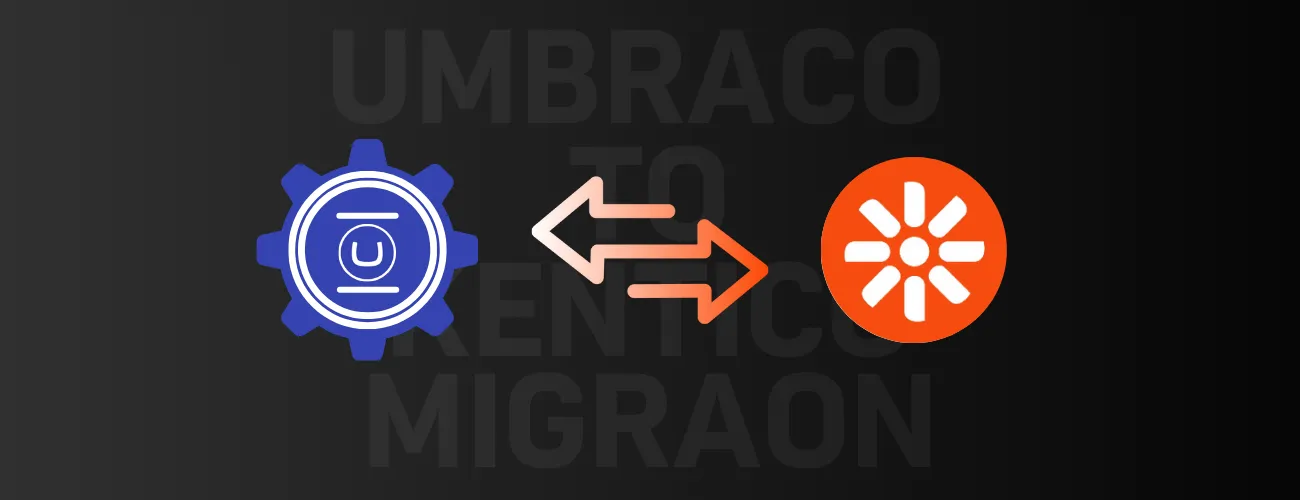




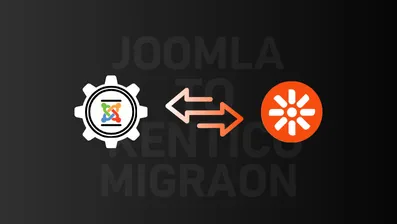

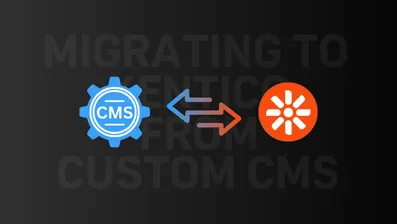

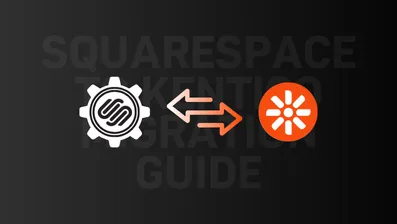
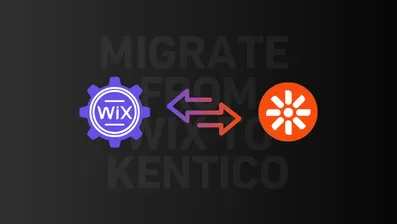

 +91 9680599916
+91 9680599916
 vanshika@dotstark.com
vanshika@dotstark.com
